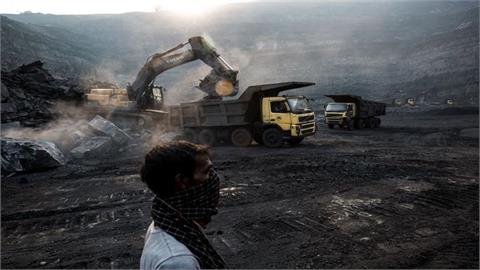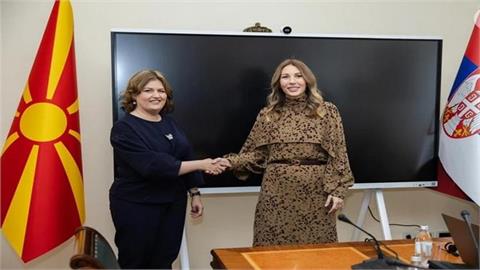The global energy sector in 2021 featured record high natural gas prices due to low output and rising demand as economies started to recover from the effects of Covid-19, crude oil price volatility amid OPEC+ decisions, new Covid-19 variants, and pledges to fight global warming from the UN Climate Change Conference.
Oil prices started the year with 11-month record highs with Brent hitting $56.36 and WTI registering $52.75 on Jan. 8. The Organization of Petroleum Exporting Countries (OPEC) and its allies, also known as OPEC+, in a surprise announcement declared that Saudi Arabia would voluntarily reduce its production in February and March by 1 million barrels per day (bpd), Russia and Kazakhstan would collectively increase their output by 75,000 bpd and the rest of the group would hold output steady.
This came amid low demand with many large economies under strict lockdowns and mitigation measures to contain the coronavirus.
On Feb 4, Brent oil hit the highest level since February 2020 when trade started at over $59 a barrel after OPEC+ agreed on full conformity to the production cuts.
On March 4, OPEC+ members agreed to extend production cuts for another month through April except for Russia and Kazakhstan. Saudi Arabia’s two-month output cut by 1 million bpd was also extended for an additional month through April. The group’s decision to roll over output cuts in April pushed Brent over $69 a barrel.
On April 1, the OPEC+ group agreed to incrementally increase output. The agreement covered the phasing out of Saudi Arabia's additional production cut of 1 million bpd to bring the group’s collective production to 5.8 billion bpd in July.
On July 18, the OPEC+ group agreed to a production plan from August onwards following a two-week halt in talks after the United Arab Emirates (UAE) refused new production rises based on 'outdated output baselines.' The group finally resolved the disagreement by updating not only the production baseline of the UAE but also of Saudi Arabia, Russia, Iraq and Kuwait. The OPEC+ group also increased output by 400,000 bpd from August to December and extended its production cut agreement from April 2022 to December 2022.
In October, Brent hit over $81 per barrel bolstered by the OPEC+ group’s decision to keep the production increase rate unchanged in November, which rebuffed the US’s insistence on increasing output. Rising crude demand boosted by record-high natural gas prices also supported the upward price trend.
On Nov. 23, in an attempt to provide additional market supply and lower crude prices, US President Joe Biden said his country would release 50 million barrels of oil from the Strategic Petroleum Reserve (SPR). He also called on major oil-consuming countries to follow suit, resulting in pledges to do so by China, India, Japan, South Korea and the UK.
-Europe saw record natural gas prices
Natural gas prices saw steady increases from the beginning of the year, dipping briefly in October due to strong demand recovery, tighter-than-expected supply and extreme weather conditions.
Natural gas prices in Europe increased by over 900% since January reaching €187 per megawatt-hour at the Dutch TTF hub on Dec. 21.
In Europe, natural gas consumption in electricity generation grew due to increasing air conditioner usage in the summer and lower hydro and wind inventories. With less Russian gas in Europe and lower gas storage levels ahead of the winter season when natural gas consumption typically grows, prices hit record highs.
Prices at the start of the year were €18 per megawatt-hour but climbed to €116 per megawatt-hour on Oct. 5.
On Oct. 29, prices fell to €64.7 per megawatt-hour, after Russian President Vladimir Putin instructed Russia’s gas giant Gazprom to begin pumping gas into Europe’s gas storage facilities in November.
Natural gas prices started climbing again after German energy regulator, Bundesnetzagentur, temporarily suspended the certification procedure on Nov. 16 for the Nord Stream 2 natural gas pipeline that will carry Russian gas to Europe when operational.
- Nord Stream 2 natural gas project
Russia resumed work on the Nord Stream natural gas pipeline in December 2020, after construction was suspended in late 2019 due to US-imposed sanctions.
The pipeline project has garnered much criticism both from the US Administration and many European countries, including Poland and Ukraine, which say that it will give Russia greater political and economic leverage over Germany and other countries in Europe that are dependent on Russian gas.
On Jan. 19, the US imposed sanctions on the Russian pipelaying vessel 'Fortuna' due to the ship's involvement in the pipeline construction.
However, Fortuna resumed pipelaying in Danish waters on Feb. 6.
The US cautioned all entities on March 18 to immediately abandon work on the Nord Stream 2 natural gas pipeline.
On April 1, Nord Stream 2 AG, the executive company of the Nord Stream 2 project, announced that project completion reached 95%.
The US warned Germany on April 12 of its unwillingness to compromise on the dispute over the Nord Stream 2 project, saying it would use all possible means to stop its construction. In response, Germany’s foreign minister pledged ongoing support for the project on April 26, amid sustained US pressure to stop the controversial project.
The US and Germany reached an agreement on July 21 on the pipeline that will see Berlin take extensive measures to assuage US concerns. In exchange, the Biden administration said it would not impose further congressionally mandated sanctions on entities linked to the project.
On Sept 10, Gazprom announced the completion of the Nord Stream 2 pipeline's construction.
Gazprom started to fill the first line of Nord Stream 2 with gas, Nord Stream 2 AG announced on Oct. 4.
German energy regulator, Bundesnetzagentur, temporarily suspended the certification procedure for the pipeline on Nov. 16 to allow the formation of a subsidiary company under German law to govern the German section of the pipeline.
On Dec. 13, Bundesnetzagentur once again temporarily suspended the certification procedure, citing the project's shortcomings in meeting European energy law requirements.
Bundesnetzagentur announced on Dec. 16 that no decision is expected on the certification of the Nord Stream 2 pipeline in the first half of 2022.
Nord Stream 2 AG announced the start of gas pumping on the second line of the project on Dec. 17.
- UN Climate Change Conference
The UN Climate Change Conference, also known as COP26, ran from Oct. 31 to Nov. 12.
The main goal at the summit in Glasgow where nearly 25,000 delegates from 200 countries convened was to keep global warming below 1.5 degrees Celsius (2.7 degrees Fahrenheit) by taking swift and concrete action that encompasses financial commitments.
Important pledges were made during the two-week summit although some experts believe these will not be enough to fully tackle climate change.
On the first day of the summit on Sunday, leaders of the world's 20 richest nations reiterated their commitment to the 2015 Paris Agreement’s goal of limiting the global average temperature to 1.5°C above pre-industrial levels.
On Nov. 1, more than 100 world leaders signed a declaration committing to halt and reverse forest loss and land degradation by 2030. Under the agreement, 12 countries also pledged to spend $12 billion in public funds between 2021 and 2025 to protect and restore forests with an additional $7.2 billion to be provided by private investors.
On Nov. 2, over 100 countries committed to the US and EU-led initiative, the Global Methane Pledge, to cut methane emissions by 30% by 2030.
Additionally, on Nov. 2, 40 leaders, representing more than a share of 70% of the world’s economy, including the US, India, EU and China, signed up to the Glasgow Breakthrough Agenda which is modeled on the UK’s net zero strategy.
The first goal of this agenda focuses on clean power as the most affordable and reliable option for all countries to meet their power needs efficiently by 2030. The second covers road transport with zero-emission vehicles becoming the new normal given their accessibility, affordability and sustainability. Near-zero emission steel is the third goal and the fourth focuses on making renewable and low carbon hydrogen globally affordable by 2030. The fifth goal is concerned with creating climate-resilient and sustainable agriculture everywhere by 2030.
South Africa, India, Indonesia, and the Philippines, representing over 15% of coal-related emissions globally, were selected as the first beneficiaries of the initiative to advance a transition from coal power to clean energy on Nov. 4.
Twenty-three countries made national climate education pledges, including net zero schools and placing climate at the heart of national curriculums on Nov. 6.
Governments of 33 countries, including Turkey, the UK and Sweden, along with businesses and other organizations that influence the future of the automotive industry and road transport, agreed to accelerate the transition to zero-emission vehicles to achieve the climate goals of the Paris Agreement on Nov. 11.
On Nov. 13, the COP26 concluded when all attending countries reached a new climate deal that will try to keep global warming at 1.5 degrees Celsius.
The final agreement, the Glasgow Climate Pact, came after long negotiations that continued into Saturday night as India intervened to change the language on coal use. With this last-minute intervention, India sought to change the final text of the agreement to read, “phase down” rather than “phase out” unabated coal power.
(Anadolu Agency, December 22, 2021)



